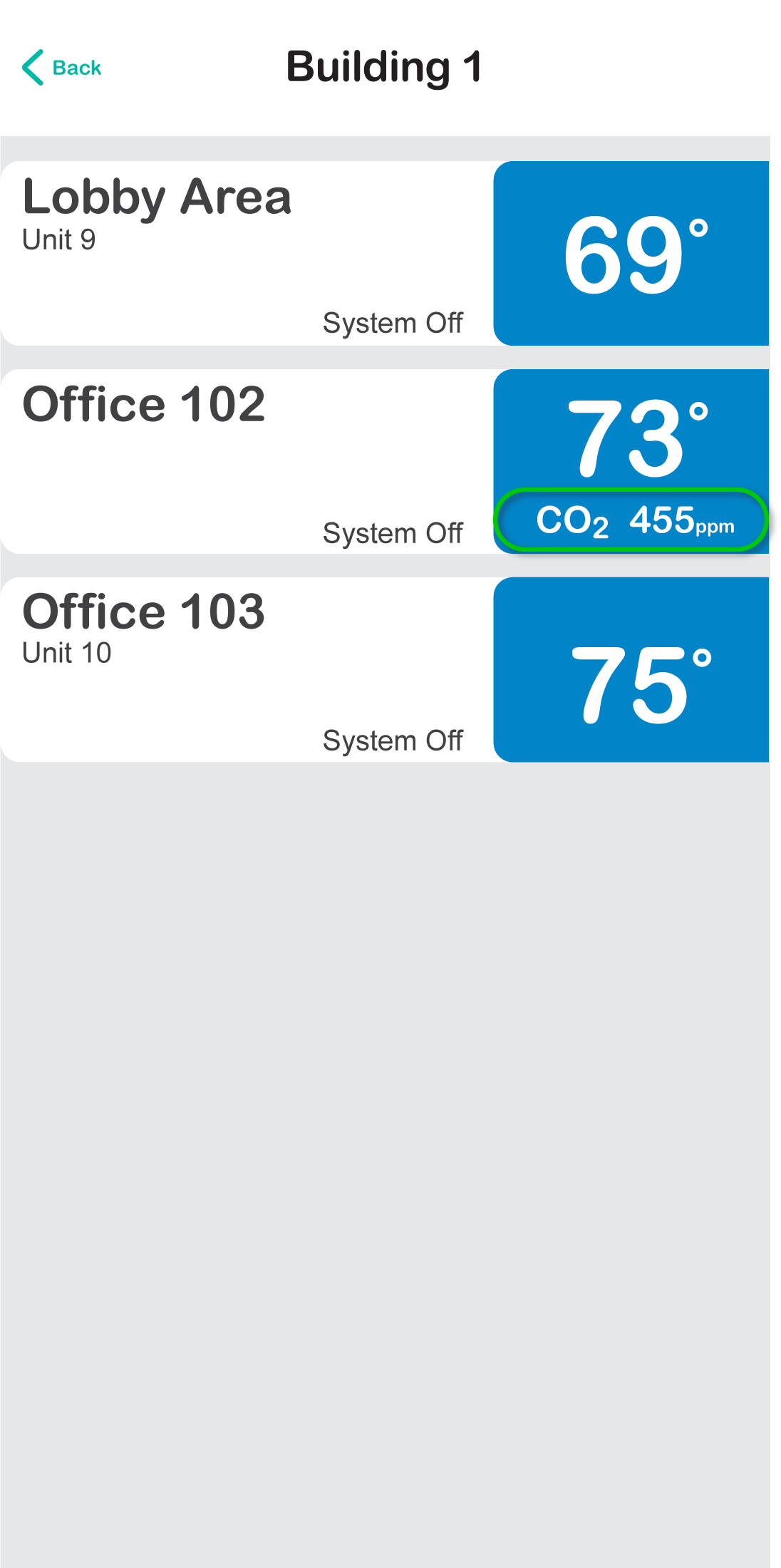In this section
- Where do I find room CO2 levels?
- Where are Pelican CO2 sensors located?
- What is CO2?
- What is ppm?
- What do different CO2 levels indicate?
- Is the CO2 Pelican is detecting and report for Life Safety?
- Adjusting CO2 Thresholds
Where do I find room CO2 Levels?
In small text under a room’s temperature, areas in your building which have a Pelican CO2 sensor will display the real-time CO2 concentration levels, in parts-per-million (ppm), for that area.

Where are Pelican CO2 sensors located?
A Pelican CO2 sensor is integrated into a Pelican thermostat. So, it is in the ideal location for proper relative humidity readings, if it is also in the ideal location for proper temperature detection.
What is CO2?
CO2 is a colorless, odorless gas produced by respiration; a gas humans breath out.
What is ppm?
Parts per million (ppm) is the number of units of a particle per million units of total particles.
What do different CO2 levels indicate ?
Because CO2 is a gas humans breath out, measuring a room’s CO2 concentration levels is an effective way to know when a room is occupied and how occupied that room is.
For example, if CO2 levels are 400 ppm ( which is the assumed outdoor air CO2 concentration levels) then the space is assumed to be empty (no occupants) or has such few occupants. If the room's CO2 levels are at 1000 ppm, then the space can be assumed occupied. If CO2 levels are greater than 1000 ppm, then the space is assumed to be occupied by more occupants than the space was designed to accommodate.
Is the CO2 Pelican is detecting and reporting for Life Safety?
No. This is not a life-safety indication and should not be used as one.
Adjusting CO2 Thresholds
In small text, under the temperature, rooms with a Pelican Relative Humidity (RH) sensor will display the real-time humidity levels for that room.




